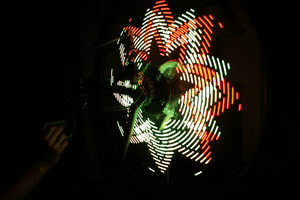Non SINKAPO-RAN: “Huh?? Zhng? Beng?”
Before you start scrambling to your Webster dictionary to search for the two foreign sounding words you had just heard, I must explain the two words are basically part of Singlish, an English-based creole language spoken in Singapore. Thus, it is unlikely you will find the meanings of them in a traditional English dictionary.
So what do they really mean? According to Wikipedia, Ah Beng is a stereotype applied to a certain group of young Chinese men in Southeast Asia who is typically a young Chinese man and usually lacks cultural refinement. Ah Bengs are also associated extensively with zhng-ed cars (modified), often in the boy racer style, and are stereotypically seen as excessively flashy and materialistic.
To a certain extent, being Beng is cool in local automotive aftermarket context. The culture of zhng-ing the car, or also commonly known as “Pimping my ride” has more or less reach out to the masses here. Zhng-ing the car is very popular in Singapore. If you look out on the streets today, there are many modified cars. They simply love expressing their individuality through the different modifications they did on their car; customised decals, disco lights, loud bass, soup up engine, shiny rims, racing seats, loud exhaust and many more. The automotive aftermarket products has more or less spawn into a sizable industry in Singapore.
 |
| Style or Beng? |
 |
| Big Furby fan? |
 |
| All that glitters is gold |
 |
| More power |
What about zhng-ing my bicycle? Cycling has become increasingly popular in Singapore in recent years. Singaporeans not only cycle for recreation, but is also used it as an alternative option for short-distance within the neighbourhoods and MRTs. With the growing addressable market, there are too, many aftermarket products for the bicycle enthusiasts in Singapore. There are many things you can choose: changing the colours, brake pads, titanium frame, basket holder, air horn etc.
If you are still looking for something to individualise your bicycle, you might want to consider Monkey Light Pro. So what is a Monkey Light pro? In short, Monkey Light pro creates stunning images and animations within a bicycle wheels.
How does it really work?
According to Technewsworld.com, Monkey Light Pro consists a set of four bars with 256 colours LED lights attaches with bolts to the spokes of the rider's bicycle wheel. The lights rotate along with the wheels, creating an image. It uses a theory called Persistence of Vision whereby an afterimage illusion is supposedly generated by the brain and eye, creating a complete picture from a series of images. Four magnetic sensors and a two-axis accelerometer track the speed, upwards position and rotation direction. A chip enables the light to create bright, still or animated images that fill the entire wheel.
There are currently 3 different versions of the product available; M210, M232 and Pro. Based on the specs, the products are differentiated on number of LEDs and colours used. The more LEDs and colours, the more realistic and colourful images and animations you can create. Monkey Light Pro does not come cheap though as it cost USD895 (excluding shipping).
Having a Monkey Light Pro installed on my bike will definitely increase my Beng-ness. As much as I like to zhng my bicycle, I would probably hold back the decision for a more competitively price product to be available. As there is still a ban on flashing neon lights since 1972 in Singapore, interested buyers should also check with the laws too before installation.










No comments:
Post a Comment